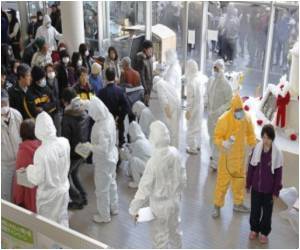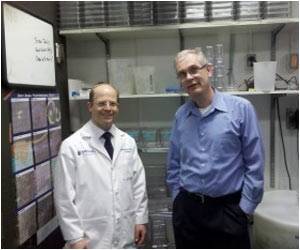A reduction by half in the radiation dose to which cardiac patients are exposed during diagnostic perfusion imaging is now feasible , according to an Israeli study.

The various modalities of modern perfusion imaging - such as single photon emission computed tomography (SPECT) - allow the non-invasive assessment of myocardial blood flow and thus the detection of coronary artery disease. The cardiac imaging test is usually performed twice to provide a comparison between at rest and at exercise ("rest-stress", and vice-vera). Blood flow can be scanned and visualised because of an injection of radioisotope tracer (technetium sestamibi) which enters through the coronary blood vessels and is distributed into the myocardium ("perfusion"); the images are based on gamma rays given off by the tracer substance. Healthy functional myocardial tissue will absorb the radioactive material. However, in cases of reduced blood flow (because of coronary artery narrowing) perfusion defects will be seen. This denotes "myocardial ischaemia", which occurs following exercise. When there is damaged tissue (infarct), fixed defects will also be seen at rest imaging.
According to Professor Nili Zafrir, Director of Nuclear Cardiology at the Rabin Medical Center in Petah Tikva, Israel, and first author of this late-breaking study, the current application of standard myocardial perfusion diagnosis is "limited" because of "high radiation dose" in the tracer substance with which each patient is injected. She agrees that the radiation dose is within acceptable limits, but insists that the level of radiation exposure (and its consequent cancer risk) is still a matter of great debate. The present study was designed to test whether radiation dose could be reduced without loss of resolution in the diagnostic images.
Radiation effective dose is measured in millisieverts, and, with conventional protocols, each investigation exposes the patient to a radiation dose of between 8 and 25 mSv. This study compared outcome from two protocols, a conventional full dose injection of tracer substance and a half-dose injection. Each group comprised 109 patients, who were investigated with stress-only, rest-and-stress and stress-and rest imaging. The full dose protocol was applied with dosages ranging between 12 and 32 milicurries (mCi) (depending on patient weight); in the half dose protocol dosages ranged between 5 and 17 mSCi. These were converted to radiation effective dose (in mSv).
Professor Zafrir explains that the study only became possible because of the introduction of new image processing software, which was originally designed to reduce the time it takes to acquire a full diagnostic image. " The aim of our study," she says, "was to use the same software but to assess the feasibility of reducing the tracer dose instead of reducing the acquisition time."
Results showed that 94% of the images from the half-dose protocol were assessed as "excellent to good", suggesting no loss of image quality or diagnostic accuracy when the radiation dose of the perfusion was halved.
Advertisement
"So it's our view that myocardial perfusion imaging is feasible with significant radiation dose reduction," says Professor Zafrir. "We found that image quality using the new processing software was similar to that in conventional protocols. Indeed, the clinical results identified with the half-does protocol were equivalent to those determined by full dose imaging. But significantly, the half dose protocol reduced radiation exposure to a minimum of 1.9 mSv in one-third of our patients, far below the dose range we see in conventional perfusion scanning.
Advertisement
Source-Eurekalert















